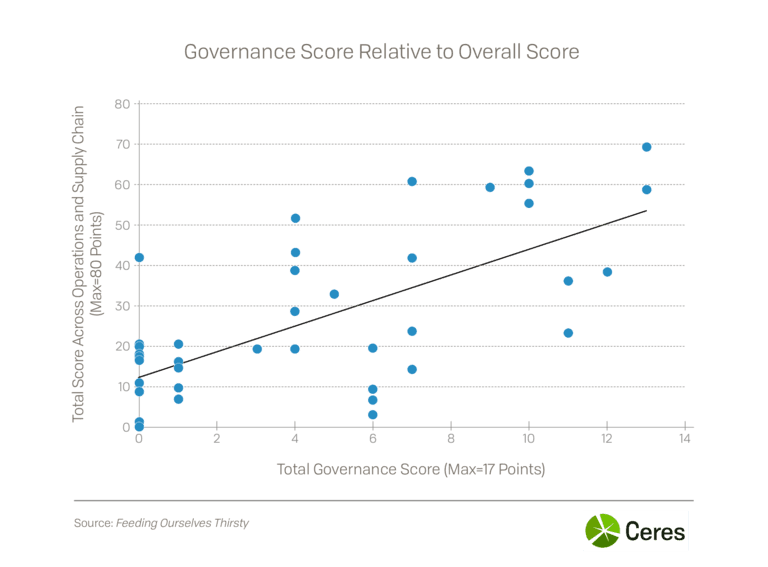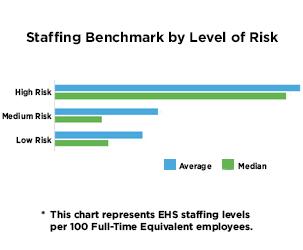Tokyo Metro Goes ‘Train to Table’ with Hydroponic Lettuce


The farm-to-table (also called farm-to-fork) movement has been all the rage for several years, and despite some dubious behavior, one can argue it has helped strengthen relationships between farmers, restaurants, consumers and most importantly – the food we eat.
In Japan, this trend has taken its very own twist in Tokyo, with one of the city’s rail transit operators dabbling in hydroponic farming the past few years.
As showcased recently in one of Tokyo’s major daily newspapers, the company, Tokyo Salad, is growing about 400 plants in what was previously an unused warehouse located under one of the subway system’s elevated transit lines. The startup, a joint venture between rail operator Tokyo Metro and a development company, currently markets 11 varieties of greens.
The facility, in which LED lights shine on plants 16 hours a day, raises basil, kale and lettuces without the use of any soil or fertilizers. Water used to mist these plants include minerals such as zinc, phosphorous and potassium. And this uber-hygienic operation is a more sophisticated venture than your local hydroponics store: as one Tokyo Metro employee explained to Public Radio International (PRI) when the venture first started, the five-week process that turns seeds into greens is largely treated as a trade secret.
It's important to remember Tokyo Salad and other urban hydroponic growers will not shake up Japan’s food industry in the near term. Do not expect the greens to show up in the legendary food halls in Tokyo’s department stores for a while. Nor are they expected to appear in the countless mom-and-pop and chain markets that dominate much of Japan’s retail landscape. At the moment, most of Tokyo Salad’s customers are high-end restaurants in Tokyo’s top hotels or trendy cafes.
The idea of growing food as close as possible to where it is finally eaten is also hardly a new concept in Japan. Several years ago, for example, a local Subway sandwich shop made waves for growing lettuce in-store in an attempt to win over customers looking for more sustainable lunch options. Meanwhile, Japan’s limited farmland and high density has turned into a laboratory attempting to find new ways to feed its population.
What makes Tokyo Salad stand out, however, is that it shows how an organization can think far outside the box while seeking new business ventures. As profiled on PRI, the population of Tokyo (and Japan at large) is expected to decline in the coming years and decades – which means ridership will decrease, putting pressure on Tokyo Metro to find other ways to generate revenues.
Urban farming could become a key strategy as Japan seeks to strengthen the country’s food security this century. Although Japan has been one of the most generous donor nations in the quest to boost food security and other resilience measures worldwide, the country faces its own food security risks. Climate change, a highly urbanized population that has led to dependence on part-time farmers - and, of course, geopolitics (the country is in North Korea’s cross-hairs, after all) all threaten the country’s food future. Furthermore, Japan’s increased dependence on imported foods, in part to changing consumer tastes, also leaves the nation of 127 million people vulnerable.
Technology could help Japan scale up its local food production, especially if unused spaces long assumed hostile to raising food, like old warehouses, can increasingly do so cost effectively and at a profit. And if that technology transfer can move across borders and become affordable, urban farming could feed the world and create a new wave of jobs.
Image credit: Tokyo Salad
The Social Cost of Carbon Tells a Story about Carbon Pricing Policies


By Sheldon Zakreski
The Social Cost of Carbon (SCC), which places a dollar figure on the long-term damage done by a metric ton of carbon dioxide emissions (mtCO2) in a given year, is a phrase many folks have never heard of, yet it greatly affects both our economy and the environment. As of early 2017, the SCC has been used to justify regulations that have more than $ 1 trillion in benefits, according to Yale University economist William Nordhaus. The SCC is an important tool in federal policy because proposed environmental regulations must demonstrate that the benefits outweigh the costs.
The U.S. Environmental Protection Agency (EPA) came out with updated SCC figures this past October that are a marked departure from the past. Reducing the previous 2020 SCC estimate of $45 per mtCO2 to roughly $3.50 per mtCO2. The effect of such a change is that it will become more difficult to propose policies that substantially lower emissions. For example, under the prior SCC figure, the Clean Power Plan (CPP) would have generated $20 billion in benefits, but the benefit estimate under the updated figure is a significantly diminished $1.6 billion. Therefore, if the Trump Administration’s efforts to repeal the CPP are blocked by the courts, the lower SCC figure could be used to justify substantially weaker emissions reductions than those originally envisioned in the Plan.
Beyond the obvious change in administrations, the two primary factors driving the SCC figure are the scope of the damage assessment, and the discount rate. The EPA under President Obama factored in global damages from CO2 emissions, whereas the most recent update only considers damages within U.S. borders. The rationale for including global damages is that climate change is a global problem, and that this inclusion signals to the world that the U.S. is considering the global impact of emissions originating within its borders. This is a critical message, as it gives the U.S. leverage to push for other countries to commit to greenhouse gas reductions as their emissions cause damage to the U.S.
The second factor explaining the significant drop in the SCC is the discount rate. As a measure intended to factor in the cost of damages years out from emissions occurring today, the SCC must incorporate a discount rate. The higher the discount rate the lower the value of the future benefits from reducing emissions today. The $45 in 2020 SCC figure is based on a 3 percent discount rate, while the October 2017 update uses a discount rate of 7 percent, which basically means Trump’s EPA assumes future damages from greenhouse gas emissions will be relatively inconsequential economically speaking.
The SCC is often cited as an important benchmark for carbon reduction policies, but as states fill the void left at the federal level, the following considerations might serve as a useful guide for how the SCC may, or may not, inform state carbon policies.
- The Social Cost of Carbon is subject to politics. This should seem obvious based on the above, but a cautionary tale for states linking carbon prices to the SCC is that they could see prices fluctuate widely as a result of political changes at the federal level. The current carbon price in California’s cap and trade market of $15 was a fraction of the SCC figure under Obama’s EPA, but is now a multiple of the SCC under Trump’s EPA.
- Multiple policies impose a spectrum of carbon prices. While carbon taxes and/or cap and trade are explicit carbon price policies, it’s important to recognize that states can impose a suite of complementary policies, each with different implicit carbon prices. For example, the Electric Power Research Institute estimates the carbon cost from California’s Renewable Portfolio Standard and Lower Carbon Fuel Standard amount to $277 per metric ton and $131 per metric ton respectively in 2020. Therefore, it’s important to think of the overall portfolio of policies. The portfolio approach will create a range of carbon costs, some of which may be lower than the SCC and some higher, both of which are okay.
- Think globally. As carbon policy moves to the sub-national level, the global nature of climate change can become muted. This is a mistake. In the case of the SCC, reducing the scope of damages to the nation underprices the SCC and cedes the leverage for pushing other nations to act. States that design policies that fixate on direct benefits at the state level undercut their ability to have other jurisdictions adopt carbon reduction policies. The end result is that these efforts only do so much in advancing carbon reduction goals because it leaves these States susceptible to damages from emissions from other jurisdictions.
The Social Cost of Carbon is a critical figure for establishing federal policies, as it prices the damages from climate change. The extent to which a value is placed on avoiding those damages today depends on the scope of damages (national versus global) and the discount rate one places on future damages. While it is a useful regulatory metric for policy making, applying it to carbon price policies can be challenging given the subjective nature of the SCC.
Image credit: Flickr/Bureau of Land Management
Sheldon Zakreski is the Director of Asset Management for The Climate Trust
Coal Divestment isn't Enough, Says CarbonTracker
By 2030, the coal industry will effectively be operating in the red. That's the latest analysis from the CarbonTracker Initiative, an independent think tank that looks at the economic implications of today's coal energy and other markets.
But what analysts were really looking at in its study Lignite of the Walking Dead, which was released this week, was what the scenario would look like economically if the 28 countries that comprise the European Union were to actually limit global warming to below 2℃ by 2050.
And while the prospects of a world that doesn't include carbon-intensive coal energy is appealing to many, an incomplete transition presents formidable economic challenges for the global community, say the writers.
The report is a follow-up to its earlier study on the U.S. markets, No Country for Coal Gen, which was released in September. In that report, the analysts looked at the regulatory risks for the U.S. coal market if the world were to maintain an under 2℃ strategy. The prospects looked grim for the U.S. coal industry.
"The economics of U.S. coal power could not be starker: new coal capacity is not remotely competitive," said the writers, who projected that in the coming years it would be "the exception rather than the rule for the operating cost of existing coal to be lower than the levelized cost of new gas and renewables."
That's good news for a world that chugs along fine on renewable energy, right?
Not so fast, say the authors.
EU's misguided optimism
Transitioning to clean energy on a global or continental basis doesn't happen overnight. And as the EU is learning, it doesn't happen simply out of resolve. It's hard work replacing an industry that was once believed to be irreplaceable -- one that for years, had fueled much of the world's production of electricity.
"Confidence in coal-heavy utilities [in the EU] is returning as business restructurings, court rulings and power prices have revived balance sheets after years of huge impairments." Despite the current global discussion about the need to transition to renewable energy, share prices in German utilities like RWE and Uniper have surged in recent years (67 and 74 percent respectively).
Yet that renewed emphasis on coal energy hasn't accounted for the challenges the market continues to face. "[Air] pollution regulations and rising carbon prices will continue to undermine the economics of coal power in the EU, potentially making generation assets unusable by 2030."
At the present time, therefore, 54 percent of coal in the EU is currently cashflow negative. By 2030, that loss is estimated to rise to 97 percent. The EU will be burdened by a $25.9 billion economic loss if it continues to support coal-heavy industries, analysts report.
Coal energy investors are at a crossroads
"Utilities with exposure to coal power in the EU are at a strategic crossroads: continue to invest in coal and hope governments will allow rent-seeking in the form of capacity and retirement payments, or divest and prepare for a low carbon future."
European energy companies like Swedish government-owned Vattenfall have already taken a decisive step to divest from coal. The company, which has markets throughout the continent, initiated its switch last year when the company announced that to avoid further losses, it planned to transition to sustainable sources, including solar and wind, within five years.
But its move highlights a dilemma, notes CarbonTracker: While some companies are successfully making the switch, others like EPH have found economic value in operations that were slated to be phased out, "including the purchase of Vattenfall’s German lignite units."
The issue raises an interesting question: How to ensure solvency of companies that transition from decades-long dependence on coal technology and infrastructure as they reinvest in sustainable sources and infrastructure?
With a "pro-coal strategy [that] largely depends on lobbying strategies to avoid regulation and secure support payments," it isn't easy, the analysts observe.
First, "[investors] should adjust the valuation ascribed to coal generation assets held by utilities. This will involve using asset-level model which provides a 2030 retirement schedule by dynamically determining which units close when."
They also suggest that utilities need to realize the imperative of that 2030 benchmark to avoid further market losses. Recognizing the need for "a combination of policy commitments,technological progress and business model changes" that shift the energy industry as a whole can facilitate a smoother and more successful change to renewable energy for the affected companies and the market as a whole.
And as the EU has seen in the past, positive leadership doesn't just help reform the industries within its own borders, it can set a pathway for innovative change in other parts of the globe, as well.
Images: Morning vista at RWE's Grevenbroich, Germany plant (2008)- Flickr/Patrick; Graphs - CarbonTracker
Addressing the Cost of Home Heating for Working Families


This article series is sponsored by Consumers Energy and went through our normal editorial review process.
For more than a third of American earners, paying monthly bills is a challenge. For some – nearly a fifth of American residents – that struggle can include choosing which essential commodity to go without during peak usage periods: Food, medications or the electricity to power and heat their homes.
According to a 2016 report put out by the nonprofit Groundswell, the bottom 20 percent of the country’s earners commit almost 10 percent of their monthly earnings to paying their power bill. That can be a substantial hit to the pocketbook for struggling families or retired couples that have other costs like school, transportation and added medical expenses to factor into the monthly take-home pay.
Rising power rates also cost poor communities more than middle- or upper-income earners, Groundswell points out, because they usually can’t afford the newer homes on the market that use less power and are better insulated.
“Over the last decade alone, electricity expenditures as a proportion of low-income household budgets increased by a third, while falling for higher earners,” the authors state.
Data released this July by WalletHub shows that overall energy costs can pose a bigger problem for families, especially in homes that rely both on electricity and different fuel sources for power. For the average family, juggling those costs may include factoring all or part of the following: Electricity, heating fuel, natural gas (for cooking and heating). Average energy costs for running the home can run over $200 per month.
Heating Energy Assistance Fortunately, there are a number of programs that are designed to help out low-income residents. But again, they vary from state to state in what they offer and the extent of relief they can provide.
The federally funded program Low Income Heating Energy Assistance Program (LIHEAP) provides some assistance for low-income families that are at risk of not being able to pay their energy bills. Conditions for eligibility are based on the earner’s income level, size of family, expenses and other factors. In many cases the program will pay to have the home checked for leaks and make recommendations, even if the resident doesn’t qualify for LIHEAP.
But there are often difficulties with qualifying for LIHEAP assistance. For one, states administer the federally funded program and set their own conditions for qualifying. Poorer states, or states that don't have a large budget for social programs, may not have the funds or the developed programs that others provide.
And the qualification criteria can differ as well. In some cases qualifications require applicants to meet federal poverty guidelines (150 percent below the level set by the federal government); in other cases, the cutoff is more lenient, based on state average earnings.
For example, applicants in the state of Connecticut can qualify for assistance if they only meet 60 percent of the state’s median income. Homeowners can have up to $15,000 in liquid assets in the bank and still qualify. Renters qualify if at least 30 percent of their income goes to rent. Other types of assistance is available as well, such as covering energy bills that don't relate to heating.
In Alaska, residents qualify if they are at least 150 percent below federal guidelines, have heating costs of at least $200 a month and meet other requirements set by the state and determined by the kind of domicile they are living in. Alaska's LIHEAP program won't cover fuel for cooking. In some states, the federal LIHEAP program is supplemented by private organizations that either administer part of the LIHEAP benefits or provide other benefits through nonprofits and for-profit entities.
In Michigan, a variety of nonprofit and for-profit organizations help low-income families who are having problems paying for their heating bills. Residents can apply for assistance based on the utility services and area of residence. Veterans can also apply for assistance through local affiliated programs.
In Jackson County, Mich., the United Way administers a program for low-income customers of Consumers Energy. Through its CARE plan, qualifying families can receive up to 50 percent credit on their bill during the winter and 30 percent during the winter toward a two-year repayment plan. Residents can also access home improvement options designed to reduce heat loss.
Other organizations spread throughout the state, like The Heat and Warmth Fund (THAW) provide financial assistance, access and advocacy for low-income residents who can’t pay their energy bill or have other challenges.
Addressing America’s energy affordability challenges
Nonprofit energy assistance helps low-income earners overcome temporary challenges in paying their bills on a seasonal or yearly basis. But what is the real, long-term answer to America's energy affordability issues?
The nonprofit Energy Efficiency for All (EEFA) suggests that to truly address the challenges that the country's lowest earners face, energy efficiency must be affordable for all consumers. Energy-efficient homes that don't require supplemental upgrades and energy sources that are affordable for today's growing families must be part of the answer.
"Low-income households participating in energy efficiency programs report direct benefits that improve their quality of life," write Ariel Drehobl and Lauren Ross in their report Lifting the High Energy Burden in America's Largest Cities: How Energy Efficiency Can Improve Low Income and Underserved Communities.
Low-income utility programs that are tracked on a demographic basis do play an important role in addressing energy affordability issues. But so do clean energy initiatives and exploring new ways to deliver affordable programs. Ensuring that multi-family housing is available and energy efficient could "cut the sector’s electricity usage by as much as 26 percent" suggest the writers, who extracted data from several states to determine the impact that energy efficiency would have on multi-family housing
But better power options also play a role in reducing energy costs, the writers argue. Their data is based on the studies conducted by the Obama administration in formatting the Clean Energy Plan. States that support energy solutions that take the place of coal-produced energy, such programs that include solar, natural gas and wind are cheaper and more efficient and offer long-term sustainable energy that translates to better economic outcomes for low-income families and more energy efficiency for the nation.
Global Food Companies Neglect Water -- And It's Hurting the Bottom Line


By Eliza Roberts
Among global food companies, there is a so-called drought of water-aware boards of directors. And for an industry that uses 70 percent of the world’s fresh water, on a warming planet with scarcer resources, that lack of awareness is a concern.
Investors are zeroing in on how companies are tackling water and sustainability risks, and increasingly they’re focusing on the board room. In a recent Ernst & Young survey of some 320 investors, more than 75 percent said that mandatory board oversight of sustainability disclosures is “essential” or “very useful” when making decisions about whether or not to invest in a company.
Little wonder. Companies that have strong board oversight on sustainability issues, including water, send a signal to investors that they’re serious about these issues. And experts have long asserted that businesses perform better on actual indicators of sustainability when their boards are engaged.
Now Ceres has research to back up the strength of this connection.
In the recent update of our Feeding Ourselves Thirsty analysis, we found that among the 42 major food & beverage companies that we benchmarked on water risk management, there was a strong link between stronger governance and companies that performed well across the other categories, including operations and supply chain.
Campbell Soup Company, for example, is among a small but growing group of companies that increasingly recognize the importance of strong governance when it comes to sustainability. It’s one of four companies, along with Coca-Cola, Diageo and Nestlé, that briefs its board on water-related issues. All four scored among the top 10 in our benchmarking analysis.
“Campbell's CEO and board appreciate the opportunity to understand and assess sustainability performance within the context of core business strategy,” Dave Stangis, Chief Sustainability Officer at Campbell Soup Company told me. “Building that into the governance process drives accountability within the enterprise."
Or consider Molson, the 3rd highest ranking beverage company in our analysis. As a part of the board’s mandate to oversee executive compensation metrics, Molson’s board has identified sustainability as a key indicator to measure executive performance. At Molson, the corporate executive team is rewarded based on a set of metrics measured against the company’s 2020 sustainability targets, including water use.
Unfortunately, these companies are the exception rather than the rule. Not enough corporate boards are stepping up. Overall, the food companies we analyzed managed on average to get just 4.5 points out of the 17 we awarded on governance. And a string of major players scored a perfect zero—including Cargill, Archer Daniels Midland, Chiquita Brands and Tyson Foods.
The takeaway is clear. On key indicators, ranging from board oversight of water-related issues and links between executive compensation and sustainability goals, the industry is lagging when it comes to governance.
For instance, half of the boards we analyzed did not oversee material risks and opportunities related to sustainability and water. And even though we saw an increase in companies starting to link executive compensation to management of water-related issues, 71 percent of businesses didn’t take this critical step.
Companies simply cannot afford to keep ignoring water and other sustainability issues like climate change that could materially affect corporate financial performance.
For the $5 billion food sector, the combination of climate change and growing threats to water scarcity, including population growth and pollution, is turning water into one of the sector’s biggest financial risks. In 2016, multinational corporations disclosed that they faced $14 billion of water-related risks, a five-fold increase over the previous year.
Boards have a fiduciary responsibility to act when risks are material. And that is why more companies need to develop sustainability competent boards.
By understanding what climate change or water stress means, why it matters to their business and what their organizations can do, directors can successfully make climate and water risk part of their governance systems.
That way, boards will be able to respond to the rising scrutiny among investors. They’ll be able to help prepare their companies for the risks and the opportunities created by water stress, climate change, or forced labor in their supply chains.
Lead from the Top, outlines three basic steps companies can take to have a sustainably competent board: integrate knowledge of material sustainability issues into the board nominating process to recruit directors that ask the right questions; educate all directors on material sustainability issues to allow for thoughtful deliberation and strategic decision-making at the board level; and engage regularly with external stakeholders and experts on relevant sustainability issues.
Again and again, we’ve seen how strong governance—or lack of it—determines whether companies thrive or stumble when they have to deal with major market challenges. The corruption, deforestation and tainted meat scandals engulfing JBS, the world’s largest meat producer, drive home the importance of good leadership in tackling key challenges and maintaining profitability in the long-term.
Food companies need to better prepare for the huge threat that water risks will have on their business. Turning that around will depend in large part on whether boards start waking up to the financial risks that water poses to their business.
Eliza Roberts is Senior Manager of Water at Ceres, a sustainability nonprofit organization working with the most influential investors and companies to build leadership and drive solutions throughout the economy.
Israelis Redefine Business Sustainability


This article series is sponsored by Maala - Business for social responsibility in Israel and went through our normal editorial review process.
By Sagit Porat
The essence of CSR today should be about the way businesses are bettering life of employees, customers and society at large.
These next steps in sustainability were presented by leading Israeli companies like Strauss, Teva, Bank Hapoalim and Shikun & Binui, as well as global corporations such as Microsoft and P&G at the international conference held in Tel Aviv on 29-30 November by Maala – Israel's Corporate Social Responsibility (CSR) organization. Specifically, the conference explored innovative products that support meaningful relationships; seek solutions for smarter sustainable cities; and promote food-tech to improve people’s nourishment.
Participants from more than 120 businesses, 80 organizations and government agencies were among the 800 attendees of the two-day 2nd International Maala Conference titled "Innovation for Good Life." During the conference's second day, participants had the opportunity to explore some of the innovative CSR practices executed by Israeli companies in a range of field tours throughout the country, shifting the focus from the corporations themselves to the way they affect people's lives, the community and the environment.
The conference opened with examples from Procter & Gamble. The company's vice president of global sustainability Virginie Helias and her team explained the corporation’s perspective that good life is less about wealth and abundant consumption, and more about value in life. She presented two innovative products that were developed with a preconceived notion of creating value for customers, bettering their lives: the first is a razor by Gillette, designed to be safe and easy to use by caregivers while assisting others (such as elderly parents) to shave; the other is the recycling of plastic washed up on shores into shampoo and dish soap bottles.
Computing technology also plays a pivotal role in the interface between sustainable development and good life. The technology giant Microsoft realizes its role in this process. "Innovation in computers and technology has to develop carefully, while assessing its reception in society and its effect on cultural and social development", said Michel van der Bell, corporate vice president of Europe, Middle-East and Africa at Microsoft. At the conference, he gave the example of an app that will enable visually impaired people to use smartphones conveniently.
Innovative solutions by leading Israeli corporations, focused on bettering life, were also highly featured, including sectors that are traditionally quite conservative, such as building and construction. To address some of these issues, Shikun & Binui is looking for innovative smart city solutions on issues such as energy, infrastructure and transportation. It has therefore joined forces with Italian-based energy giant Enel, forming a partnership to establish an innovation urban lab, presented Orry Ben-Porat, the company's vice president of sustainability, marketing and innovation.
Another Israeli-based company seeking technological innovation in its endeavor to improve people's lives is international food & beverage corporation Strauss Group. Chief technology officer Prof. Eyal Shimoni proudly affirmed that Strauss is leading Israel to becoming a major center for food tech innovation, addressing every aspect of the supply chain in the food industry, from field via factory and retail, all the way to the consumer. Vivid examples were given to participants who joined the field tour visiting Strauss's FoodTech Lab on the conference's second day.
Teva Pharmaceuticals also focuses on innovation as potential for substantial impact on issues such as personally tailored healthcare, using Israel as its beta site. It joined forces with Phillips in a new model of collaboration form "Sanara Ventures," an investment platform specializing in pioneering, revolutionary companies in the field of medical equipment and digital medicine.
Bank Hapoalim, one of Israel’s largest bank, presented an innovative approach to mitigating painful debt collection processes, by focusing on the bank's clients rather than on their debts. A designated unit at the bank showed remarkable achievements by communicating with the clients, building trust and helping them to seek and find solutions for their economic hardships.
In this way the bank pursues the good life. The impacts of innovation apply not only to people as consumers, but also as employees. Technological advancements leave some employees lagging behind, particularly workers who are digitally illiterate, in traditional industries that undergo rapid automation. Digital disparities impact the day-to-day quality of life of individuals, both in and out of the workplace.
Anat Gavriel, CEO of Unilever Israel, tackled the issue and presented her company's attempts to address it: traditional industries are facing constant shortages of skilled employees. The development of robotics transitions the industry to increased automation, which also impacts the employee shortage. Employees are therefore shifted to perform other tasks, necessitating their retraining for new duties and responsibilities. Unilever, as an employer, has taken responsibility for the upskilling of its employees, and in particular improving their low digital literacy, offering varied solutions, training and educational programs.
Addressing employment also requires sensitivity to diversity and inclusion, especially in a society as complex and varied as the Israeli one. Social innovation is a necessity when addressing these issues, and such was the case of the Osem-Nestle Group, winner of the 2017 Dov Lautman Diversity Award, for their diverse and inclusive work force: the company had presented a substantial and comprehensive effort to include employees from the Israeli Arab sector in all employment ranks within the company, and assimilated extensive organizational processes for the integration and promotion of its Arab employees.
"We chose the theme of Innovation for Good Life, because we believe that this is the essence of CSR today: the way businesses contribute to good life", said Momo Mahadav, Maala's CEO. "I believe that this is the step forward from discussing whether businesses are good or bad or whether they mean right or wrong. The question of good life is more concrete and could be measured in terms of the value that businesses create."
Maala emphasized that CSR undertakings, particularly as they are expressed by the notion of innovation for good life, are geared to partake in the efforts of accomplishing the Sustainable Development Goals (SDG), as defined by the UN in 2015: to end poverty, protect the planet and ensure prosperity for all. The business sector must be an active player in these endeavors for them to be reached, and does not have the luxury of leaving it up to government and civil society activity.
Stay tuned at Maala for more information on next year’s conference.
Image credit Sharon Amit
Do You Have the Right Staffing Levels to Manage Your Companies EHS & Sustainability Risks?


- Do you need to make the business case to expand your EHS&S staff?
- Did your company recently go through a merger and industry data would be useful to restructure your team?
- Is your company interested in benchmarking salaries of EHS&S staff?
If you answered yes to any of these questions or would just like some hard, reliable facts and data about EHS&S staffing, structure and budgets, then the National Association of Environmental Management’s (NAEM) recently published report based on data from more than 190 companies across industry sectors is perfect for you.
This is the only benchmarking report available that was designed by a committee of peer leaders to help those who are at the helm, benchmark their organizations by industry, annual revenue, total headcount and level of operational risk.
Learn More
Media Relations:
Schana Kramer
202-986-6616
Toyota and Panasonic Consider Partnership on EV Battery Manufacturing


According to several news sources, Toyota is considering an agreement to manufacture batteries for electric vehicles (EVs) with Panasonic. The Japanese automaker has been under increased pressure to deliver on its promise to have its EV product line comprise half of its total global sales by 2030. In a press conference earlier this week, Toyota executives acknowledged the company would have difficulty meeting that goal considering the current state of battery technology. A partner like Panasonic could make that ambition more of a reality over the next dozen years.
While competitors such as General Motors and Volkswagen have charged ahead on electric car research and development, Toyota has been scrambling to catch up in the EV race. As Bloomberg reiterated in a profile last month about the automaker’s strategy, Toyota’s bet on zero-emissions vehicles was placed on hydrogen fuel cell technology. But in recent years, electric charging infrastructure has scaled, EV range keeps improving and battery prices keep falling to the point where electric cars could reach cost parity with gasoline- or diesel-fueled vehicles within a decade.
The strong possibility of a deal with Toyota is a shot in the arm for Panasonic, which has already enjoyed a long relationship with Tesla. The company manufactures batteries at the EV automaker’s gigafactory outside of Reno, Nevada, and earlier this year introduced a line of sleek rooftop solar panels that could integrate with Tesla’s Powerwall battery units.
Moreover, scoring an established global automaker such as Toyota as a steady customer would help strengthen Panasonic’s business prospects for the long term. While its association with Tesla has earned it copious amounts of press coverage in recent years, that attention may not necessarily translate into a steady and sustainable revenue stream. Tesla has yet to become profitable, and in recent months has struggled with “production hell” while struggling to deliver the much-anticipated Model 3. While Tesla and its CEO, Elon Musk, are adept at generating eyeball-catching headlines with news such as the rollout of the Tesla Semi, plenty of competitors lurk also in that space.
Becoming a key supplier for a leading automobile manufacturer will dramatically improve Panasonic’s prospects – not to mention for the future of EVs at large.
“This is important news because we can tell which automaker is most serious about the mass production of electric vehicles by looking at which ones are seriously working to secure battery supply,” wrote Fred Lambert for the blog Electrek.
Panasonic’s battery manufacturing capacity will be crucial for Toyota, as it is determined to rejoin the EV market in 2020 with launches in India and China.
Image credit: Toyota Global
SC Johnson Ramps Up Skin Allergy Transparency


Earlier this year, the household cleaning supplies and consumer chemicals manufacturer SC Johnson, which makes just about everything from shoe polish to air freshener, announced it would publicly disclose the presence of skin allergens.
The company recently acquired the eco-friendly brands Method and Ecover. This week, the Wisconsin-based manufacturer, made another push for sustainability launching a website that lists specific allergens by product – 368 in total, according to the company.
Consumers can visit WhatsInsideSCJohnson.com, plug in a product or ingredient, and learn more – to a certain point. Whether this is a true step for “transparency” is in the eye of the beholder.
The site is useful when researching a specific product. But if a consumer wants to learn about a specific chemical, the information that SC Johnson discloses is rather limited – and such ingredient search results do not include any products that use the chemical in question.
For example, TriplePundit ran a query for deltamethrin, a pest control agent used in some products such as Raid bug spray, that could trigger skin allergies and risks harm to household pets. But all SC Johnson explains is:
“Deltamethrin is an Active Ingredient. An Active Ingredient controls a specific pest in a registered product, such as in an insecticide, antimicrobial or repellent product.”
Consumers who wish to learn more will have to search online elsewhere. Furthermore, a definition of what “Active Ingredient” actually means would be helpful. But from SC Johnson’s point of view, this is a huge step forward.
“We continue to lead by example in ingredient transparency because families should have easy access to information on the products they bring into their homes,” said Fisk Johnson, Chairman and CEO of SC Johnson, in an emailed statement to 3p. “Other companies use similar ingredients, but we’re helping consumers make informed choices by disclosing the specific skin allergens that may occur in our products. Those who may have skin allergies will be helped by this transparency.”
More information on those exact skin allergy risks, however, could help make WhatsInsideSCJohnson.com a far more useful site.
Other consumer packaged goods (CGP) companies have taken action on disclosing and eliminating common allergens and toxins from their products in recent years. Two years ago, Procter & Gamble ceased using chemicals that allegedly posed cancer risks. Another global CPG giant, Unilever, has pledged more transparency in disclosing fragrances used within many of its products. And with California’s passage of a cleaning product chemical disclosure law earlier this fall, watch for more companies to take similar steps toward self-regulation – before the regulators impose additional rules on them.
Image credit: SC Johnson
Innovation in the UK


Britain has been a hive of innovation since the start of the industrial revolution. At Innovate 2017, the UK government’s innovation agency brought together many technology leaders, with a considerable proportion of them developing sustainable, low carbon and cleantech solutions. The story told at the event across four presentation stages and numerous exhibition stands was of British enterprises developing solutions to many of our world’s issues.
The Government’s Chief Scientific Adviser, Sir Mark Walport gave evidence of the UK’s innovation, when he commented from the main stage that “the UK has 4% of worlds scientists, but produces 16% of the highly cited papers”. However, as he went onto say, “we haven’t been great at turning innovation into commercial reality”. Therefore, the main aim of the event was to support companies to grow faster and give them a platform to tell their story.
Specialists in story-telling, Guy Pattison and Will Hill of the Long Run Works, took us on a hero’s journey at the start of the day. They showed the eight stages of their free to access ‘Communication Canvas’ and how it helps to bring business stories to life. Appropriately for a tech event, they used the sci-fi examples of Star Wars and Hunger Games to illustrate the importance of stories; as they appeal the emotional right brain. No matter how logical a technology solution might be, if its promotion only appeals to the rational left brain we are missing half the head.
Heavily represented at the event was the Catapult programme run by the government and is an example the importance of sustainability in the story of British innovation. They have 10 programmes, with four of them directly related to sustainability; Transport Systems, Offshore Renewable Energy, Future Cities, Energy Systems, and others having a significant impact, such as Digital and High Value Manufacturing.
Sustainable start-ups at the cutting edge
Whilst it was important for government agencies and respected speakers to be at the event, the most exciting aspect was the attendance of a multitude of start-ups working on, and utilising, cutting-edge cleantech thinking and practices, such as; electric vehicles, battery storage and charging, circular economy, internet of things (IoT) and buildings technologies.
An example of a business utilising the latter two are LightFi. They have an IoT solution that retrofits in 10 minutes and monitors rooms by picking up how many WiFi devices are on, giving precise real-time info to enable smart management of buildings. Their CEO and co-founder, Dr Alex Bak, commented that: “As a growing start-up coming out of the Climate-KIC programme, having a stand at the event was a considerable benefit for us as we got to meet many potential partners, customers and investors, and it was inspiring to meet the other exhibitors and to see many of their interesting innovations.”
A shining pioneer
At the other end of the scale of enterprises in attendance, Tokamak Energy were a shining example of a business that is a global pioneer. You might have heard of nuclear fusion, which is where a reactor creates conditions hotter than the centre of the sun to produce energy. After decades of publicly-funded research, fusion is famously always 30 years away from commercial reality. Tokamak Energy are however on track to achieve commercial fusion power in a dozen years. Rather than working on a hyper-giant research facility, which is what an international conglomeration of nations are building, very slowly, in the South of France, they are looking to produce a comparatively much smaller version in the UK.
Ross Morgan, their Senior Commercial Manager commented: “Nuclear fusion offers the potential for essentially limitless carbon-free energy, with no risk of meltdown and no production of long-lived nuclear waste. We aim to reach 100 million degrees in our test facility in 2018, and then by 2030 have proved the commercial viability of fusion power and be delivering electricity into the grid.”
Summarising the importance of sustainability, Dr Mike Pitts, the Head of Urban Systems at Innovate UK commented when interviewed at the event: “If you’re not thinking about environmental and social factors, you’re not thinking properly about the future drivers of your business. So, we’ve built that into everything we do. And if an innovation isn’t moving towards that kind of future, it’s probably not going to succeed.”
Sustainability is everybody’s job
Pitts continues: “I used to be our lead on sustainability and work across all of our sector teams and businesses, to help them do some of that thinking. However, we took away having someone whose name or job title involves sustainability because everyone just thinks sustainability’s the title holder’s problem rather than being everybody’s opportunity. My job was to get rid of the need for my job!”
This final observation collates with a comment from Sir Mark Walport from the main stage, as he enthused that: “Innovation is a team sport”, to which we can now add that sustainability is also a team sport, creating a compelling story for British businesses to make a difference with their technologies and innovations.